#Designing #Impact #Key #Elements #Effective #Corporate #Print #Materials
In today’s digital landscape, businesses often forget the power of tangible print materials. While websites, social media, and email campaigns dominate the marketing conversation, well-designed print materials can still create impactful connections with customers, clients, and stakeholders. Whether it’s brochures, business cards, flyers, or annual reports, corporate print materials serve as an extension of your brand identity, delivering your message to the audience in a way that is often more engaging and memorable than a screen ever could be.
In this article, we will explore the key elements that make corporate print materials effective, how they can be designed for maximum impact, and why they remain relevant in an increasingly digital world.
Understanding Your Audience
Before diving into the design process, it is crucial to understand who your audience is. This means identifying not only demographic factors such as age, gender, and location but also psychographic elements like interests, values, and purchasing behavior.
- Market Research: Conduct surveys, focus groups, or interviews to gather insights about your target audience.
- Personalization: Tailor your materials to resonate with their preferences by considering language style, graphics, and even colors.
- Communication Goals: Decide what you want your audience to feel and do when they receive your print material. This clarity will guide your design decisions.
Consistency and Branding
Brand consistency is essential in creating materials that resonate and build trust over time. This involves more than just a logo; it encompasses visual elements, tone of voice, and overall style.
- Visual Identity: Your print materials should incorporate your brand’s visual identity, including your logo, color palette, and typography.
- Messaging: Ensure that the tone and style of the copy align with your brand’s voice. A law firm may opt for a formal, authoritative tone, while a creative agency might use a more playful, casual approach.
- Uniform Design Elements: Use common design elements across various print materials to create a cohesive look. For example, if certain graphics or icons are used in your brochure, they should also be found in your business card and flyers.
High-Quality Visuals
The saying "a picture is worth a thousand words" holds considerable weight in print design. High-quality visuals can draw attention and communicate your message more effectively than text alone.
- Professional Photography: Invest in professional photography to ensure your images are high resolution and appealing. Avoid using stock photos that do not align with your brand.
- Graphics and Infographics: Utilize custom graphics or infographics to communicate complex data and make information digestible. Infographics can break down statistics or processes in a visually engaging way.
- Illustration: Custom illustrations can add a unique, warm feel to your materials. They allow for creativity and differentiation from competitors.
Typography Matters
The typography you choose can set the mood for your materials and significantly affect readability. Fonts should be consistent with your brand identity while also being legible.
- Choosing Fonts: Select fonts that align with your brand’s personality. A tech company might opt for sleek, modern typefaces, while a luxury brand might favor elegant, serif fonts.
- Hierarchy: Create a visual hierarchy within your text using different sizes, weights, and colors. The most critical information should stand out, guiding the reader through the material.
- Spacing and Alignment: Ensure that there is adequate spacing between characters, lines, and sections. Crowded text can overwhelm readers and detract from your message.
Engaging Copy
While visuals guide the eye, the copy compels the reader to act. Effective copy should be concise, engaging, and informative.
- Clear Messaging: Keep your message straightforward. Avoid jargon and complex language that could alienate your audience.
- Call-to-Action: Effective print materials should include a clear call-to-action (CTA) that instructs readers on what to do next, whether that’s visiting your website, contacting you, or attending an event.
- Storytelling: Incorporating storytelling into your copy can create an emotional connection with your audience. Share testimonials, case studies, or success stories that highlight your brand’s impact.
Utilizing Space Effectively
Negative space—or the areas in your design left unmarked—plays a crucial role in creating effective print materials.
- Balance: Ensure that elements are well-balanced and not overcrowded. Introducing negative space can guide the reader’s eye and provide a comfortable experience.
- Focus Areas: Use space to draw attention to key information or visuals that matter the most.
- Layout Design: A grid layout can provide structure and predictability to your design. However, breaking the grid in key sections can help emphasize important parts of your material.
Choosing the Right Format
The format of your print materials can significantly influence their impact. Whether you are handing them out at trade shows, sending them via mail, or displaying them in your office, different formats serve different purposes.
- Brochures: Great for detailed information about your products or services. They can convey your brand story and provide valuable insights.
- Business Cards: Essential for networking, they should be designed to leave a lasting impression.
- Flyers/Postcards: These are effective for short messages, promotions, or event announcements.
- Reports: Annual reports or impact reports need to balance design and text, offering comprehensive insights while remaining visually compelling.
Choosing Quality Materials and Finishes
The tangible quality of your print materials can affect how they are perceived. High-quality paperstock and finishes signal professionalism and attention to detail.
- Paper Quality: Opt for thicker stock for brochures or business cards. Consider a matte, glossy, or textured finish depending on your design and brand identity.
- Special Finishes: Techniques like embossing, foil stamping, or UV coating can add dimension and highlight specific areas of your material.
Distribution and Promotion Strategies
Creating effective print materials is just half the battle; getting them into the right hands is equally important.
- Strategic Distribution: Identify the best places to distribute your print materials, whether that’s directly at events, through the mail, or in-store.
- Digital Complement: Consider using QR codes that lead to digital content, allowing you to track engagement or offer further information.
- Follow-Up: After distribution, have a follow-up strategy in place. Consider sending out an email or making a phone call to reinforce your message.
Evaluating and Iterating
After distributing your print materials, it’s essential to assess their performance. This involves tracking metrics and gathering feedback to continually improve your print strategies.
- Feedback Collection: Use surveys and direct customer feedback to understand what works and what doesn’t.
- Performance Metrics: If possible, track inquiries or purchases resulting from your print materials to gauge effectiveness.
- Continuous Improvement: Adjust your designs and strategies based on what you learn from your evaluations.
Importance in a Digital World
In an age dominated by digital communication, print materials offer a unique, tactile experience that can cut through the noise. Print materials are frequently perceived as more trustworthy and meaningful than digital messages, creating a sense of legitimacy.
- Builds Tangibility: Physical materials create a physical presence in a world that is evolving online, adding a layer of authenticity.
- Enhanced Memory Retention: Studies show that people remember information better when it is presented in print compared to digital formats.
- Cross-Channel Synergy: Print and digital marketing strategies can enhance each other when used together effectively, leading to greater overall brand impact.
FAQs
What are the key components of effective corporate print materials?
Effective corporate print materials include clear messaging, high-quality visuals, professional typography, and a consistent brand identity. It’s also important to maintain a focus on the audience and choose an appropriate format.
How can I ensure my print materials align with my brand?
Consistency is key to aligning your print materials with your brand. Use the same logos, colors, and typography across all materials. Ensure the tone of the messaging matches your brand’s voice.
Why should I invest in professional design for print materials?
Professional design can significantly elevate the quality of your materials, making them more appealing and effective. Good design can help communicate your brand’s message clearly and professionally while enhancing credibility.
What formats are best for corporate print materials?
The best formats depend on your goals. Brochures are great for detailed information, business cards for networking, and flyers for concise promotions. Consider both the content and how the material will be used when choosing a format.
How can I gauge the effectiveness of my print marketing?
You can measure effectiveness through customer feedback, tracking inquiries or sales generated from the materials, and analyzing engagement metrics if there are QR codes or URLs included.
How do I choose the right paper stock and finishes?
Choose paper stock based on the purpose of the print material. Thicker stocks are better for business cards and brochures for durability. Finishes like matte or glossy should complement your design aesthetic while enhancing visual appeal.
In what ways can print materials complement digital marketing?
Print materials can create a cohesive marketing strategy when paired with digital platforms. Use QR codes to enhance digital engagement or follow up email campaigns with print send-outs to reinforce messages.
Is it better to print in bulk or on-demand?
This largely depends on your marketing strategy and budget. Bulk printing can reduce per-unit costs but may lead to excess inventory. On-demand printing is useful for customized or seasonal campaigns but can be more expensive per unit.
What kind of feedback should I solicit from customers regarding print materials?
Seek input on design appeal, clarity of information, perceived value, and overall effectiveness in conveying your message. This feedback can guide future print campaigns to better meet your audience’s needs.
In conclusion, while the digital age continues to evolve, effective corporate print materials remain a potent tool for connecting with your audience. By focusing on understanding your audience, ensuring brand consistency, choosing high-quality visuals, utilizing effective typography, and employing engaging copy, you can design print materials that achieve impactful results. Incorporate these essential elements into your marketing strategy, and you will find print can successfully coexist with digital strategies, enhancing your overall brand communication.
It seems you might have missed providing the specific title you would like the 12 paragraphs to focus on. Could you please provide the article title or specify the topic you’d like me to write about? That way, I can create a relevant and engaging piece for you!








